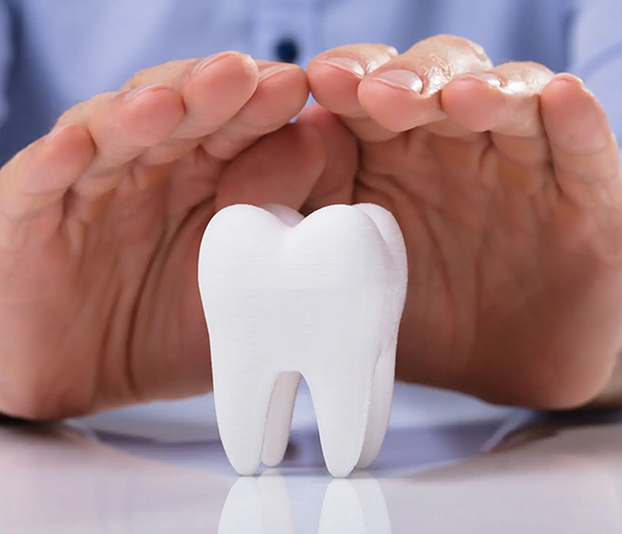Dental Insurance

Accessing policy information and filing an insurance claim.
Understanding Dental Insurance
Dental insurance provides coverage for various dental procedures, helping individuals prepare for unexpected dental issues. A monthly premium is paid to the insurance company, which can vary based on location and chosen plan. Depending on the plan, it may cover some or all costs of dental treatments.
Typically, the dentist's office will bill the insurance directly, and patients will only need to pay a copay for each visit. Dentists cannot provide information on specific insurance plans or coverage levels for procedures. Individuals should contact their employer's benefits department, dental insurance provider, or health plan's third-party payer for any coverage inquiries.
“Depending on the insurance plan, it can cover some or even all of the costs of certain dental treatments.”
Finding the Right Dental Plan
When choosing a dental insurance plan, it is important to consider various factors to find the plan that best fits your needs. The first step in finding the right dental plan is to assess your individual needs. For example, young, single adults with good dental health and no family history of oral issues will have different dental insurance needs compared to a family with a history of gum disease. Those who require more frequent dental visits and extensive treatments may benefit from a more comprehensive dental insurance policy. Creating a list of dental and oral health needs can help in evaluating policies and estimating overall costs.
Understanding the different types of dental insurance plans is also crucial, as each plan will have different out-of-pocket costs, benefits, deductibles, and more. Dental plans are typically categorized into Preferred Provider Organizations (PPO), Dental Health Maintenance Organization (DHMO), discount dental plans (DDP), and Managed Fee-for-Service Plans. Once you have identified the available plans, it is important to consider your budget, covered procedures, waiting periods, and annual limits. Taking the time to assess your dental needs, budget, and expected level of care can simplify the process of selecting the right dental plan.
“When selecting a dental insurance plan, people should consider several factors to find a plan that best suits their needs.”
Dental Plans Coverage
Understanding the coverage of your dental insurance plan is crucial. In case of any dental issues, insurance can help cover a portion of the treatment cost, reducing out-of-pocket expenses. It is important to carefully review each insurance policy to prepare for expected and potential emergency dental expenses.
Preventative dental care is typically fully covered as it helps detect dental problems early on, reducing the need for more extensive treatment later. This includes routine cleanings and exams. However, most plans have coverage limits and may not include orthodontic services. It is advisable to thoroughly read the plan details to understand what is covered. If unsure about coverage for preventative care or orthodontics, contacting the insurance provider for clarification is recommended.
“If unsure whether dental insurance covers preventative dental care or orthodontic services, people should call their provider to learn more about the plan details.”
Affordable Care Online Enrollment
The Affordable Care Act (ACA) aims to provide health insurance to millions of uninsured Americans by mandating the purchase of health insurance. While it does not include dental coverage for adults, it does require that dental insurance be available to families with children. Adults are not required to purchase coverage for themselves.
Dental coverage can be obtained as part of a health plan or through a separate dental plan. Those interested in enrolling should create an account and apply for a plan during open enrollment. Plans can also be browsed on healthcare.gov to see if they qualify for a special enrollment period.
“People can get dental coverage either as part of a health plan or by themselves through a separate, stand-alone dental plan.”
Employers Offering Dental Insurance
Most dental insurance plans typically have a 100-80-50 coverage structure, covering preventative care at 100%, basic procedures at 80%, and major procedures at 50%. It's important to note that some plans may have larger copayments for major procedures, and some procedures may not be covered at all. It's recommended to check with your insurance provider for specific details.
In the United States, employer-sponsored health insurance is the main source of coverage for many people. It's crucial to carefully review the details of your employer's dental insurance plan to understand what is covered and at what percentage. If you have any questions or concerns, don't hesitate to contact your insurance provider directly.
“If your employer provides dental insurance, carefully read the details of your plan to determine if the care you require comes covered by the plan, and at what percentage.”
Dental Insurance Fees
Similar to health insurance plans in the United States, dental insurance plans also come with expenses such as deductibles and copays. A deductible is the minimum amount that must be paid by an individual before the insurance policy covers any costs. The specific deductible amount will vary depending on the type of dental insurance plan. Once the deductible is paid, the insurance plan will cover the remaining expenses.
In addition to deductibles, patients may also be required to pay a predetermined amount known as a copay before receiving a covered service or treatment. Copays are typically paid directly to the dentist at the time of the service and may still be required even after the deductible has been met.




